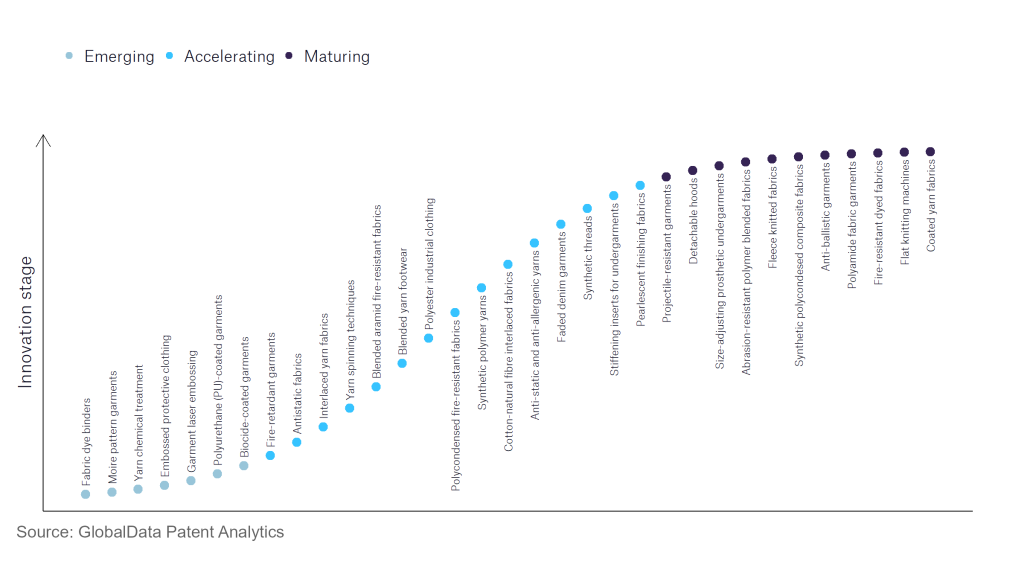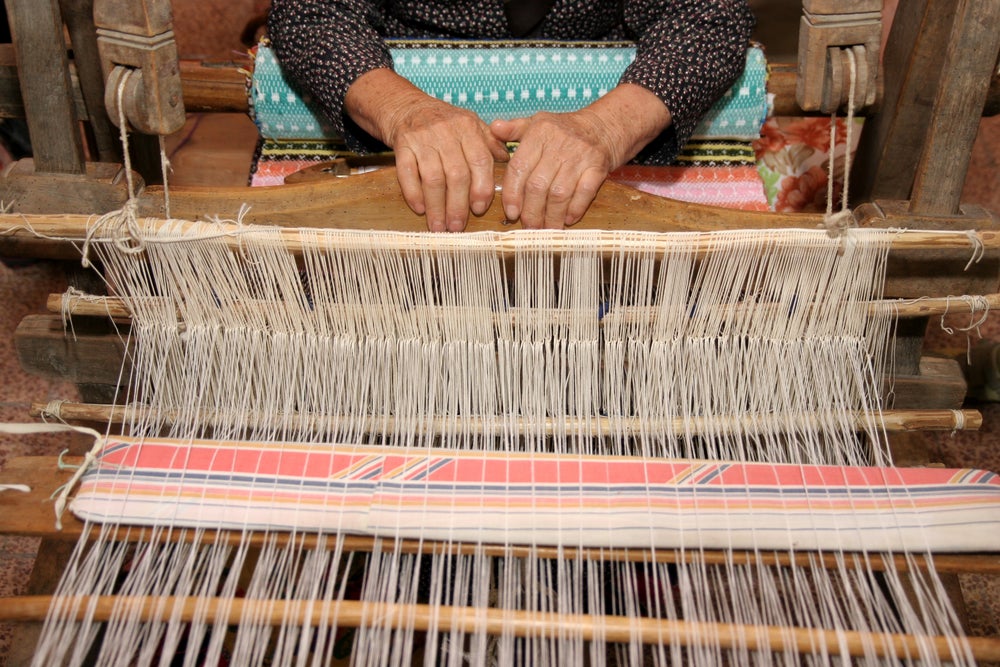The apparel industry continues to be a hotbed of innovation, with activity driven by sustainable manufacturing processes and innovative fabrics, and the growing importance of technologies such as artificial intelligence, augmented reality, and 3D printing. In the last three years alone, there have been over 32,000 patents filed and granted in the apparel industry, according to GlobalData’s report on Innovation in Apparel: Interlaced yarn fabrics. Buy the report here.
However, not all innovations are equal and nor do they follow a constant upward trend. Instead, their evolution takes the form of an S-shaped curve that reflects their typical lifecycle from early emergence to accelerating adoption, before finally stabilising and reaching maturity.
Identifying where a particular innovation is on this journey, especially those that are in the emerging and accelerating stages, is essential for understanding their current level of adoption and the likely future trajectory and impact they will have.
See Also:
20+ innovations will shape the apparel industry
According to GlobalData’s Technology Foresights, which plots the S-curve for the apparel industry using innovation intensity models built on over 13,000 patents, there are 20+ innovation areas that will shape the future of the industry.
Within the emerging innovation stage, yarn chemical treatment, embossed protective clothing, and garment laser embossing are disruptive technologies that are in the early stages of application and should be tracked closely. Fire-retardant garments, antistatic fabrics, and interlaced yarn fabrics are some of the accelerating innovation areas, where adoption has been steadily increasing. Among maturing innovation areas are flat knitting machines and coated yarn fabrics, which are now well established in the industry.
Innovation S-curve for the apparel industry

Interlaced yarn fabrics is a key innovation area in apparel
Interlaced yarn fabrics are made using a process called interlacing, which involves entangling the fibres by applying a steady air pressure on the fabric. The resultant fabric shows a braiding effect, which improves the durability of the fabric.
GlobalData’s analysis also uncovers the companies at the forefront of each innovation area and assesses the potential reach and impact of their patenting activity across different applications and geographies. According to GlobalData, there are 30+ companies, spanning technology vendors, established apparel companies, and up-and-coming start-ups engaged in the development and application of interlaced yarn fabrics.
Key players in interlaced yarn fabrics – a disruptive innovation in the apparel industry
‘Application diversity’ measures the number of different applications identified for each relevant patent and broadly splits companies into either ‘niche’ or ‘diversified’ innovators.
‘Geographic reach’ refers to the number of different countries each relevant patent is registered in and reflects the breadth of geographic application intended, ranging from ‘global’ to ‘local’.
Patent volumes related to interlaced yarn fabrics
Source: GlobalData Patent Analytics
Companies that lead the interlaced yarn fabric space in terms of patents filed are Teijin, Toray Industries, Nike, and DuPont de Nemours. In April 2022, Nike launched Next Nature Mercurial Vapor SOS SE shoes using sustainability-based 2D interlaced yarn fabric. The soccer shoes are manufactured by measuring the user’s feet and using 3D printing technology to offer high-fidelity fitting.
The leading companies in terms of application diversity are Japangoatekkusu, Mitsubishi Gas Chemical, Brrr! and W. L. Gore & Associates.
The major companies in terms of geographical reach are Noveko Trading, Albany International, Nilit and B&C Private Foundation.
Interlaced textiles outperform stitch-bonded fabrics in terms of resistance to damage and ability to be moulded into different shapes, which makes them extremely useful with modern fabrics and manufacturing techniques.
To further understand the key themes and technologies disrupting the apparel industry, access GlobalData’s latest thematic research report on Apparel.
Premium Insights
From

The gold standard of business intelligence.
Blending expert knowledge with cutting-edge technology, GlobalData’s unrivalled proprietary data will enable you to decode what’s happening in your market. You can make better informed decisions and gain a future-proof advantage over your competitors.






